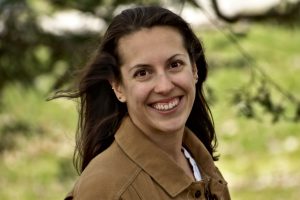Interested in science communication? Look no further. The AAAS Mass Media Science & Engineering Fellowship carries out the mission to increase public understanding of science and technology. Over the past decades, more than 700 scientists have gone through the 10-week summer program and explored the realm of science journalism. ASPB has been a proud sponsor of the fellowship and would love to foster our community members to become engaging science communicators. We interviewed our recent ASPB/AAAS fellows to hear about their experiences in the program as well as how the program pivoted their careers and perspectives. We will feature the alumnus spotlight in the next two weeks.
The deadline for the 2021 application is on January 1, 2021 at 11:59 EST. Students and postdoc (or within one year of completion) are encouraged to apply.
Katherine (Katy) Dynarski (2020)

Several years after Katy heard about the fellowship from a seminar on careers in science writing, she applied and became a fellow in 2020. She was placed at The Wichita Eagle, a daily print newspaper that serves Wichita and all of south-central Kansas, although due to the pandemic, she worked remotely, hundreds of miles from the Kansas newsroom. “Each day started with a video call with the entire news team, and then I’d get to work! Most of my days were spent researching story leads, conducting interviews, or writing up stories,” described Katy. She wrote short-medium length (500-1000 words) news stories about local scientists, or environmental and health issues affecting Kansans. Because some candidate vaccines for COVID-19 were set to be tested in the Wichita area, she wrote an explainer article about vaccine clinical trials, so people could make an informed decision about participating. As an ecologist, she knew very little about medical trials before the assignment. “I talked to a ton of doctors and nurses over the span of a few days for this story and had an absolute blast learning so much new information so quickly. I got a lot of positive feedback about this story from readers, which was exciting and new for me since I usually don’t get any public feedback on my scientific work! It was really rewarding to know that something that I had written was helpful for people. The coronavirus pandemic has made so much of life scary and confusing – having the opportunity to share information that could help people navigate just one small part of our pandemic world felt really special to me,” recounted Katy.
The fellowship built up Katy’s confidence in her own storytelling, which applies equally well to journalism and science: “Learning to trust my vision for the shape of those stories made me a more confident writer. When I returned to working as a scientist, I was surprised by how much that trust also helped me to be a more thoughtful and creative scientist. To me, the real guts of science is learning how to ask better questions that let us see the world’s stories a little more clearly. It turns out that training as a reporter is a great way to do that!” Katy is currently a postdoctoral scientist at the University of Montana. She plans to write occasional stories and perhaps a book: “I’ve always wanted to write a book one day (not a textbook, a real book), and have assumed that that was a ridiculous fantasy. After the Fellowship, I feel like it’s something that I could actually do.”
Katy’s fellowship was supported by the Ralph W.F. Hardy endowment to honor Dr. Hardy ’s contribution in agricultural biotechnology. Dr. Hardy advanced agricultural research through molecular biology and biotechnology as well as increasing the public understanding of agricultural biotechnology via media and communications.
